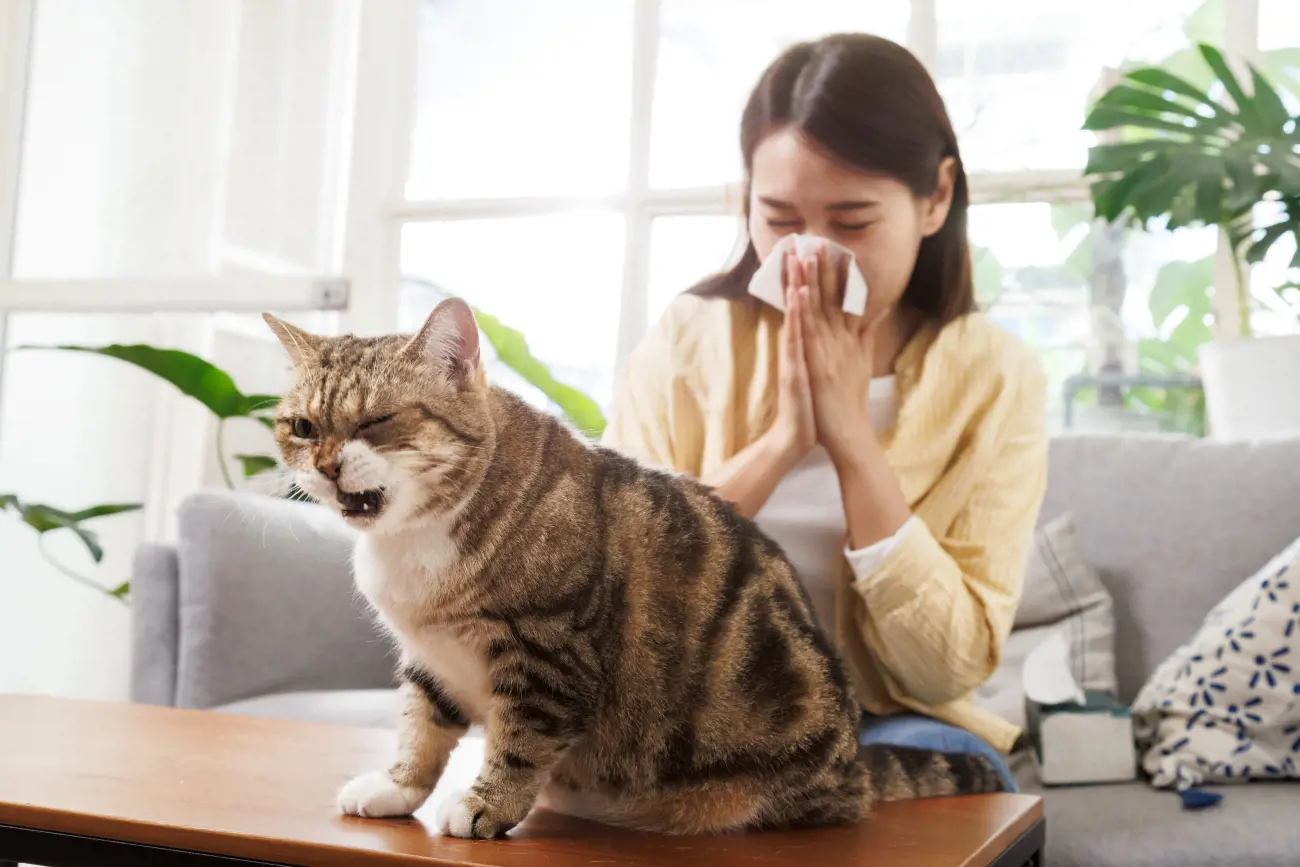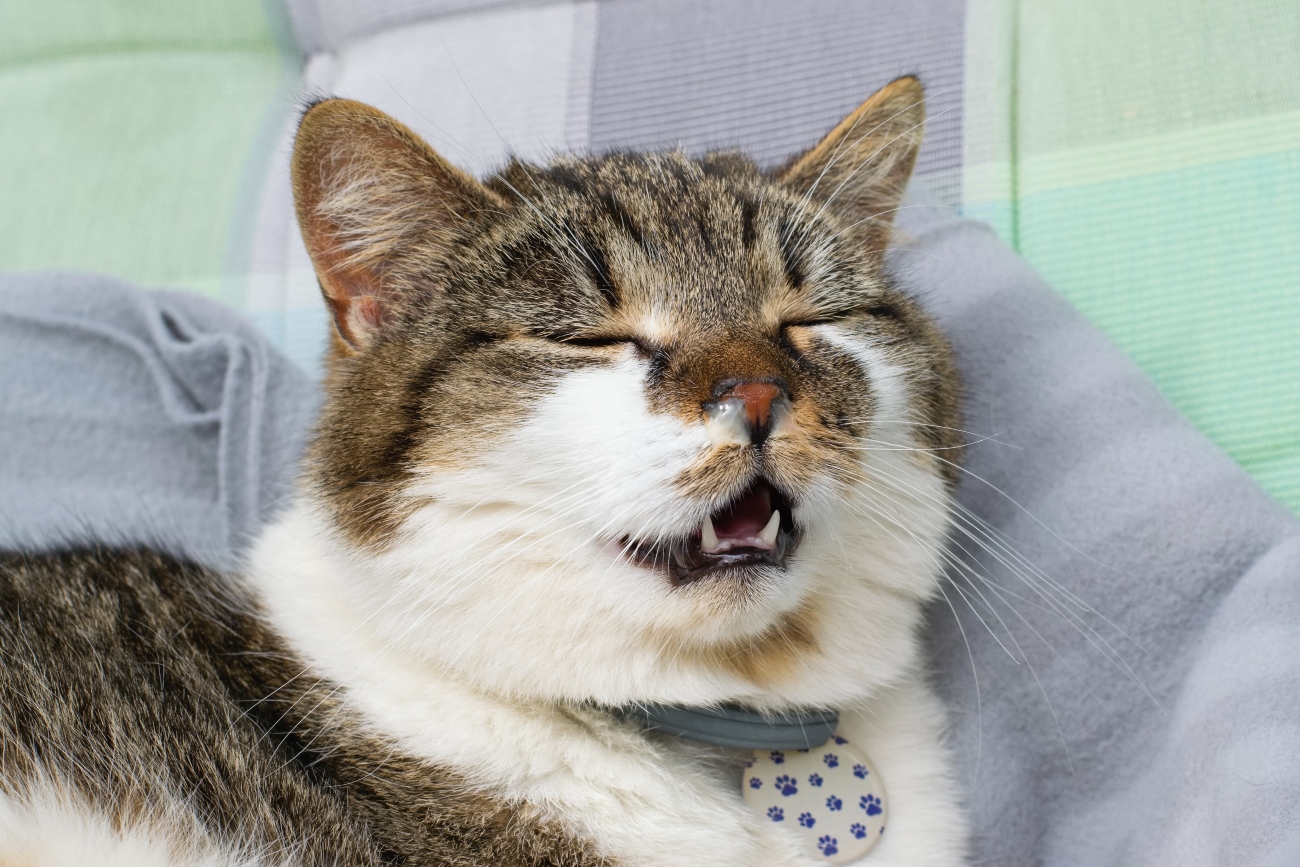Has your cat been coughing lately? While you might assume it’s just another hairball, cat coughing often signals more serious underlying issues. In fact, coughing in cats typically indicates an inflammatory problem affecting the lower respiratory tract, particularly bronchitis, and can sometimes be a sign of serious health concerns.
Your cat’s cough could stem from various causes, including respiratory infections, asthma, or even inhaled foreign objects. While occasional coughing in healthy cats isn’t usually concerning, persistent coughing accompanied by wheezing or difficulty breathing warrants immediate attention. If you notice your cat coughing up blood or experiencing severe coughing episodes that end in retching, these are clear signs to seek veterinary care.
This comprehensive guide explores everything you need to know about cat coughing, from identifying different types of coughs to understanding their causes. We’ll help you recognise when to worry, what to expect at the vet, and how to create a healthier environment for your feline friend.
Recognising cat coughing and associated symptoms
Distinguishing between actual coughing and other similar sounds is crucial for cat owners. A true cat cough is an expiratory effort producing a sudden, noisy expulsion of air from the lungs.
Coughing in cats almost always indicates an airway disease, unlike the more common hairball-related retching. Furthermore, cats cough less frequently than other animals, so if a cat's coughing persists, it should never be ignored.
Cat coughing and sneezing: What it means and potential respiratory infections
When your cat exhibits both coughing and sneezing, this combination typically points to a respiratory infection. Cat coughs, in particular, can indicate potential diagnoses such as feline asthma, respiratory infections, or parasitic infestations.
Sneezing occurs due to irritation of the nasal passages, whilst coughing indicates the infection has spread beyond the upper respiratory tract. During these infections, nasal discharge often flows back into the throat, triggering the cough reflex.
Respiratory infections causing this symptom pair are commonly viral (such as feline herpesvirus or calicivirus) or bacterial (like Bordetella bronchiseptica). Moreover, these infections may produce additional symptoms including:
-
Nasal congestion (noticeable breathing sounds)
-
Runny eyes or nose (watery or yellow-green discharge)
-
Changes in vocalisation
-
Decreased appetite or activity
Having cat insurance can aid in diagnostic costs when investigating these symptoms, especially since multiple tests may be needed to identify the specific pathogen.
Cat coughing and wheezing: Understanding respiratory distress and feline asthma
Cat coughing accompanied by wheezing represents a more serious concern, potentially indicating respiratory distress. Wheezing occurs when air passageways constrict or become inflamed, making it difficult for your cat to breathe properly.
Feline asthma stands out as a common cause of this symptom combination. Cat asthma, characterised by coughing and wheezing, requires prompt attention and can be managed with specific medications that reduce inflammation and open airways. During an asthma attack, cats often crouch low to the ground with their neck extended—a position that helps them get as much air as possible between coughs. Consequently, untreated asthma can become life-threatening.
Notably, if your cat’s tongue and gums begin turning blue or grey during coughing episodes, it indicates oxygen deprivation requiring immediate veterinary attention.
Cat coughing but no hairball: Potential causes
Although many owners assume coughing leads to hairballs, a cat coughing but producing no hairball suggests other underlying issues. Inflammation of a cat's airways due to allergens can lead to coughing and difficulty breathing. Healthy cats typically only cough up hairballs a couple of times monthly; anything more frequent indicates a potential problem.
Besides asthma and respiratory infections, other causes include:
-
Parasites (particularly heartworms or lungworms)
-
Foreign objects in the airway
-
Allergies to environmental triggers
-
Heart disease (especially coughing after exertion)
-
Lung tumours (often accompanied by weight loss and lethargy)
Given the range of potential causes, many of which require specific treatments, comprehensive insurance coverage can prove invaluable for ensuring your cat receives necessary diagnostic tests and appropriate care.
Diagnosing the cause of your cat's cough
Seeking professional help is crucial when your cat's coughing persists for more than a few days, becomes severe, or is accompanied by other symptoms. Cat coughing can result from respiratory infections, allergies, parasites, foreign objects, or even heart disease - making accurate diagnosis essential for proper treatment.
What to expect at the vet appointment
Initially, your veterinarian will take a thorough medical history, asking specific questions about when the cough started, its frequency, and any other symptoms you’ve noticed.
Prepare to describe what happens during coughing episodes in detail - including whether your cat produces anything when coughing, when it occurs most often, and if there are any changes in appetite or behaviour.
Taking a video of your cat coughing before the appointment can be invaluable, as cats rarely cough on command at the vet’s office. This visual evidence helps your vet distinguish between actual coughing and other issues like gagging or retching.
Remember, a cat's cough warrants a visit to the veterinarian to rule out any serious health issues and ensure your cat's well-being.
Common diagnostic tests and procedures
Following the physical examination, your vet may recommend several diagnostic tests:
-
Chest X-rays - Provide images of your cat’s lungs and heart, helping identify patterns associated with asthma, bronchitis, or heartworm disease
-
Blood tests - Including complete blood count to check for infection or inflammation, and heartworm testing
-
Bronchoalveolar lavage (BAL) - Collects samples from deep in the lungs to identify specific types of inflammation or infection
-
Bronchoscopy - Allows direct examination of the airways using a small, flexible camera
For persistent or severe coughing cases, additional tests might include ultrasound, sputum analysis, or specialised cultures.
How cat insurance can help with diagnostic costs
Diagnosing respiratory issues often requires multiple tests, which can quickly add up financially. Cat insurance typically covers vet fees for unexpected illnesses, including diagnostic procedures like X-rays, laboratory tests, and specialist referrals.
Most policies have an excess (the amount you pay when making a claim) that can be either compulsory or voluntary. Importantly, lifetime cover offers the most comprehensive protection, ensuring your cat remains covered for chronic respiratory conditions throughout their life, provided you renew your policy annually.
Nevertheless, always review your policy documents carefully, as coverage limits vary between providers.





